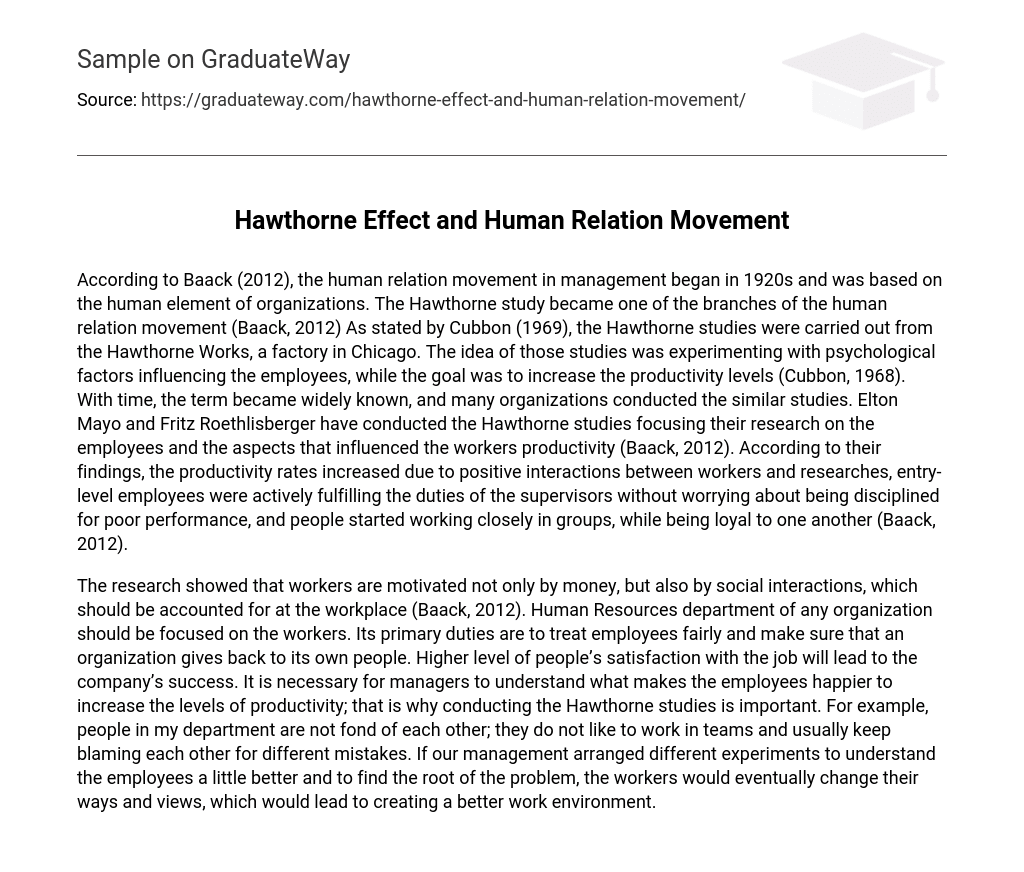According to Baack (2012), the human relation movement in management began in the 1920s and emphasized the human aspect of organizations. One branch of this movement was the Hawthorne study, which took place at the Hawthorne Works factory in Chicago (Cubbon, 1969). The purpose of these studies was to examine psychological factors that could affect employee productivity (Cubbon, 1968). Elton Mayo and Fritz Roethlisberger conducted the specific Hawthorne studies, focusing on employees and factors influencing their productivity (Baack, 2012).
The results of these studies showed that positive interactions between workers and researchers led to increased productivity rates. Additionally, entry-level employees carried out their tasks without fear of being disciplined for poor performance, and individuals started working closely in groups while remaining loyal to one another (Baack, 2012).
The research conducted by Baack (2012) suggests that both financial incentives and social interactions impact workers’ motivation. It is important for employers to consider these factors in the workplace, with the Human Resources department playing a crucial role in promoting fair treatment of employees and demonstrating the organization’s commitment to its workforce. This directly contributes to higher job satisfaction and company success. Managers should have an understanding of the factors that increase employee happiness in order to improve productivity levels, emphasizing the importance of conducting Hawthorne studies.
For instance, in my department, there is a lack of camaraderie among colleagues and no encouragement for teamwork. Consequently, individuals tend to blame each other for mistakes. If our management conducts experiments aimed at comprehending and addressing this issue’s root cause, it will ultimately foster a more positive work environment.





